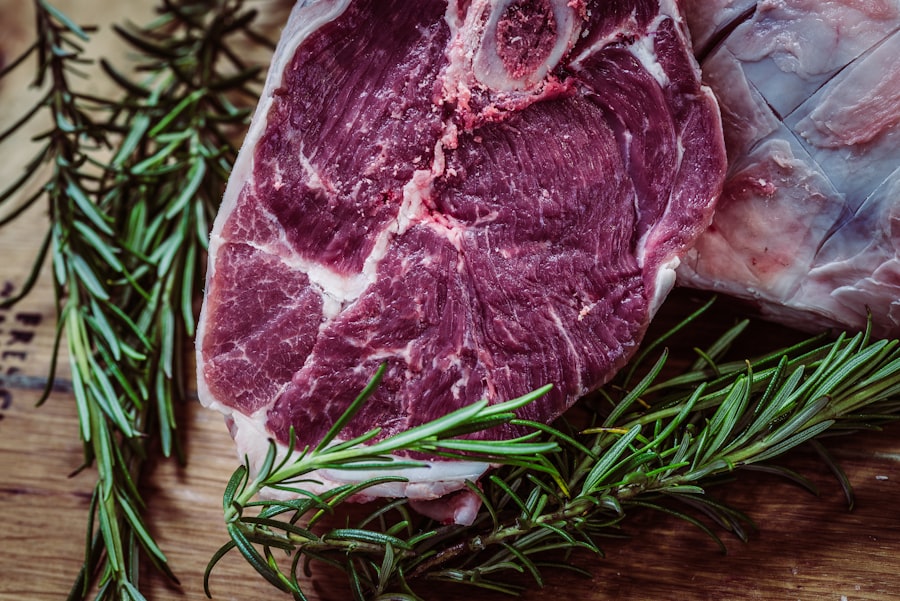Gout is a form of inflammatory arthritis characterized by sudden and severe pain, redness, and swelling in the joints, often affecting the big toe. This condition arises from an excess of uric acid in the bloodstream, which can crystallize in the joints, leading to intense discomfort. Uric acid is a byproduct of purine metabolism, and while the body typically excretes it through urine, certain factors can disrupt this balance.
Genetics, obesity, certain medications, and dietary choices can all contribute to elevated uric acid levels, making some individuals more susceptible to gout attacks. Symptoms of gout often manifest abruptly, with individuals experiencing excruciating pain that can last for days or even weeks. The affected joint may appear swollen and red, and the skin over the joint may feel warm to the touch.
Risk factors for developing gout include a family history of the condition, male gender, and age, as men are more likely to develop gout earlier in life compared to women. Additionally, lifestyle factors such as excessive alcohol consumption, high-fructose corn syrup intake, and a diet rich in purine-heavy foods can exacerbate the risk of gout flare-ups.
Key Takeaways
- Organ meat consumption can impact gout symptoms
- Understanding gout causes, symptoms, and risk factors is crucial
- Moderation is key when consuming liver and meat for gout sufferers
- Dietary choices play a significant role in managing gout
- Incorporating organ meat into a gout-friendly diet can be beneficial
The Role of Organ Meat in Gout Flare-Ups
The Hidden Dangers of Traditional Dishes
Many people enjoy traditional dishes that feature organ meats, unaware that they may be exacerbating their condition. The link between organ meat consumption and gout is not just anecdotal; numerous studies have shown that diets high in purine-rich foods are correlated with increased incidences of gout attacks.
The Science Behind the Risk
For example, a study published in the “Archives of Internal Medicine” found that men who consumed organ meats more than twice a week had a significantly higher risk of developing gout compared to those who consumed them less frequently. This evidence highlights the importance of being mindful of organ meat intake for individuals managing gout.
A Call to Action for Gout Management
In light of this evidence, it is crucial for individuals with gout to be aware of their organ meat consumption and take steps to limit their intake. By doing so, they can reduce their risk of gout attacks and better manage their condition.
How Liver Consumption Can Impact Gout Symptoms
Liver is one of the most nutrient-dense organ meats available, packed with vitamins and minerals such as vitamin A, iron, and B vitamins. However, it is also one of the highest sources of purines among food items. For individuals with gout, consuming liver can lead to a rapid increase in uric acid levels, potentially triggering painful flare-ups.
The high purine content in liver means that even small portions can have a significant impact on uric acid production. Moreover, the frequency of liver consumption plays a crucial role in managing gout symptoms. While liver can be a healthy addition to a balanced diet when consumed in moderation by those without gout, individuals suffering from this condition should approach it with caution.
It is advisable for gout sufferers to limit their intake of liver and other organ meats to avoid exacerbating their symptoms and to consider alternative sources of nutrients that do not carry the same risk.
Exploring the Connection Between Meat and Gout
The connection between meat consumption and gout extends beyond organ meats. Red meats and certain types of seafood are also known to be high in purines. For example, beef, lamb, and pork can contribute to elevated uric acid levels when consumed in excess.
Similarly, shellfish such as shrimp and crab are also linked to increased risk for gout flare-ups. This relationship highlights the need for individuals with gout to be cautious about their overall meat consumption. Research has shown that diets high in red meat are associated with a higher incidence of gout compared to those that emphasize plant-based foods.
A study published in “The American Journal of Clinical Nutrition” found that participants who consumed higher amounts of red meat had a significantly increased risk of developing gout compared to those who favored poultry or fish. This suggests that while not all meats are equally problematic for gout sufferers, moderation and careful selection are key components in managing this condition.
Tips for Managing Gout Through Dietary Choices
Managing gout effectively often requires a multifaceted approach that includes dietary modifications. One of the most effective strategies is to reduce the intake of purine-rich foods, including organ meats and certain types of seafood and red meat. Instead, individuals should focus on incorporating low-purine foods into their diets, such as fruits, vegetables, whole grains, and low-fat dairy products.
These foods not only help lower uric acid levels but also provide essential nutrients that support overall health. Staying well-hydrated is another crucial aspect of managing gout. Drinking plenty of water helps dilute uric acid levels in the bloodstream and promotes its excretion through urine.
Additionally, limiting alcohol consumption—especially beer and spirits—can significantly reduce the risk of gout flare-ups. Alcohol can interfere with uric acid elimination and contribute to dehydration, both of which can exacerbate symptoms.
Incorporating Organ Meat into a Gout-Friendly Diet
Portion Control and Balance
Individuals with gout can still include organ meats in their diet if consumed in moderation. This means enjoying small portions of liver or other organ meats infrequently, such as once a month, while maintaining a balanced diet with low-purine foods. This approach allows for the nutritional benefits of organ meats without significantly increasing the risk of gout flare-ups.
Pairing Organ Meats with Uric Acid-Lowering Foods
Another strategy is to pair organ meats with foods that are known to help lower uric acid levels. For example, serving liver alongside leafy greens or whole grains can create a more balanced meal that mitigates some of the potential negative effects associated with high-purine foods.
Cooking Methods Matter
Additionally, cooking methods such as grilling or baking rather than frying can help reduce fat content while still allowing for flavorful dishes. By adopting these strategies, individuals with gout can enjoy the nutritional benefits of organ meats while minimizing the risk of gout flare-ups.
The Importance of Moderation When Consuming Liver and Meat for Gout Sufferers
For individuals managing gout, moderation is paramount when it comes to consuming liver and other meats. While these foods can provide essential nutrients and flavors that enhance culinary experiences, overindulgence can lead to painful consequences. It is essential for those with gout to recognize their individual tolerance levels and adjust their diets accordingly.
Incorporating a variety of protein sources into one’s diet can also help mitigate risks associated with high-purine foods. Lean poultry, fish low in purines (such as salmon), legumes, nuts, and seeds can serve as excellent alternatives that provide necessary nutrients without significantly raising uric acid levels. By embracing moderation and diversity in dietary choices, individuals with gout can enjoy a fulfilling diet while effectively managing their condition.


